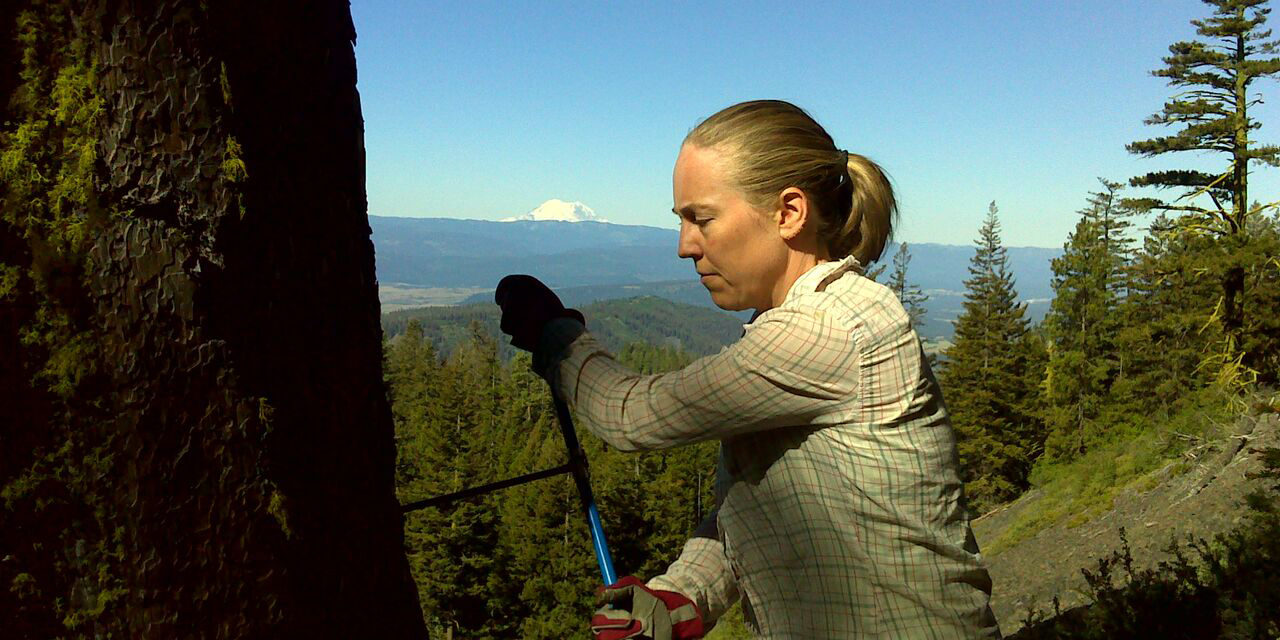Tune in to Focus Carolina during morning, noon and evening drive times and on the weekends to hear stories from faculty members at UNC and find out what ignites their passion for their work. Focus Carolina is an exclusive program on 97.9 The Hill WCHL, sponsored by the University of North Carolina at Chapel Hill.
Dr. Erika Wise from the UNC Department of Geography studies the Earth’s climate by looking at tree rings and collects samples to determine how old trees are when droughts and fires may have occurred. This data allows her to recognize climate change patterns and predict future ones.
“You can at least get an approximate age by counting the rings,” Dr. Wise said. “We do a slightly more in depth process called cross dating because trees are sometimes tricky and like to put on what we call false rings or are they sometimes miss a ring. So we like to look at them in depth under the microscope to make sure that we’re really assigning the exact year to each ring.”
Although tree rings have played a big part in understanding climate change from centuries ago, most researchers are motivated by a concern for what is happening recently in climate change and what could happen in the future.
But in places where trees don’t exist, like in the ocean, there are other organisms that are recording the changes.
“Corals record conditions in the ocean,” Dr. Wise said. “There’s the sediments in the bottom of the lakes and the oceans that are actually recording things like droughts and floods and they have all these tiny little organisms in there that have some sort of climate signal in them.”
Of course, it is easier to take a sample from a tree than glacier.
“Trees are really good recorders of climate. They have this great feature where they have what we call annual resolution, so you can really assign an exact calendar year to all those rings back through time. And so you know exactly when that ring was grown and you can get that information.”
Listen to the part one of the interview with Dr. Wise:
In order to predict possible future climate change patterns, researchers must first understand what has happened in the past.
“To be able to say ‘Is recent climate change different?’ we have to be able to compare it to something and so we need these other tools to be able to know what the past climate was like.”
In her research, Dr. Wise also studies big atmospheric events like El Nino.
“We had a couple of really huge El Ninos in the 80s and 90s,” she said, “and the question is, is that a global warming signal or do we see those back through time as well? So just again, trying to see if things we’re experiencing recently are different than those things that we experienced in the past.”
Featured image via UNC-Chapel Hill
Listen to part two of the interview with Dr. Wise:



Comments on Chapelboro are moderated according to our Community Guidelines